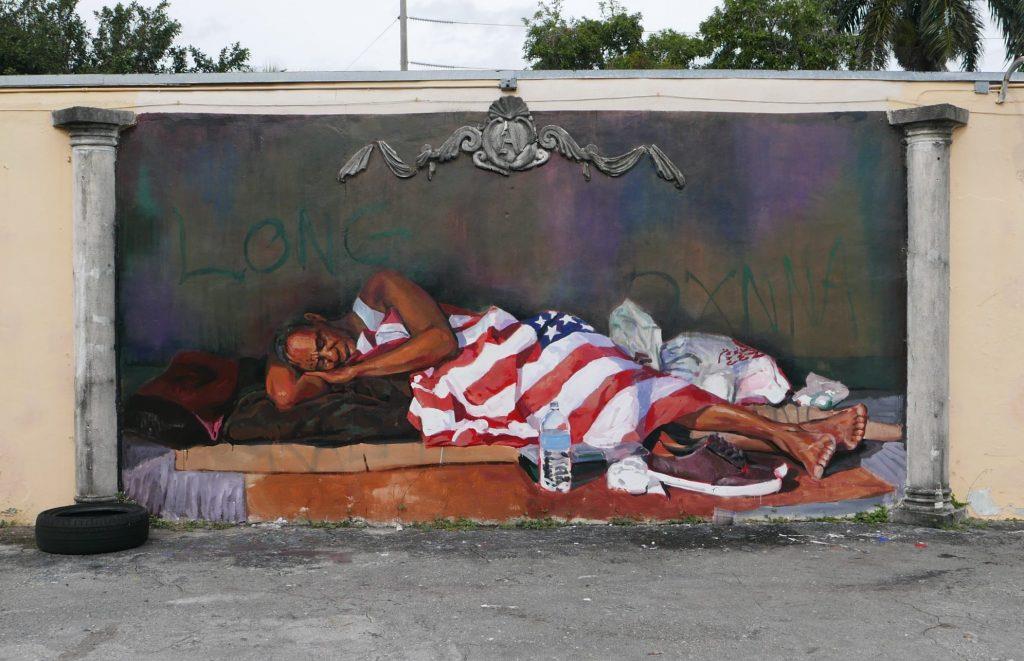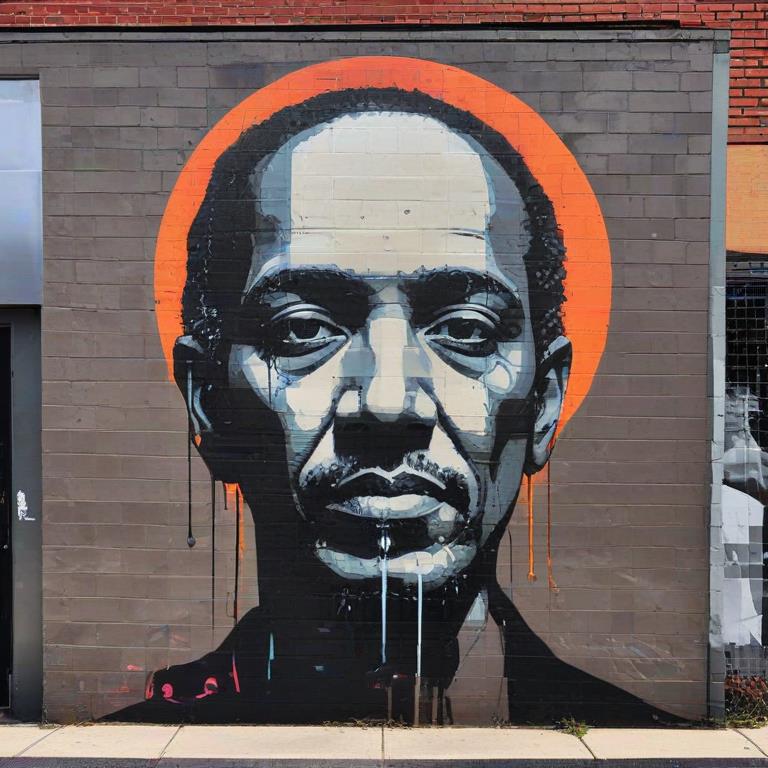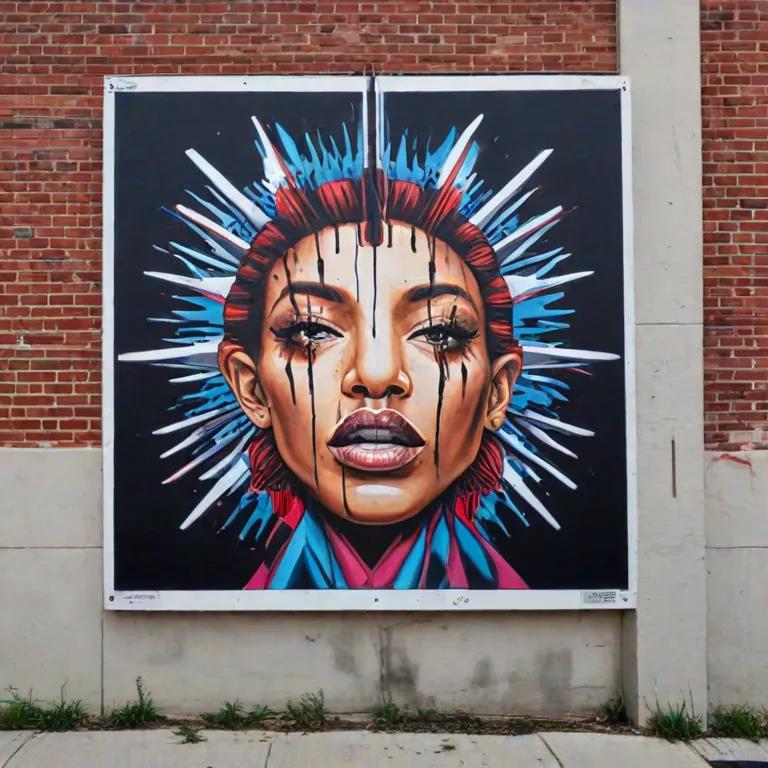(MENAFN- USA Art News)
Street art has emerged as a vibrant, transformative force in urban landscapes across America. Once dismissed as mere graffiti, this art form has evolved into a complex tapestry that encapsulates social, political, and cultural narratives-turning the mundane urban backdrop into an ever-changing gallery of expression. From the bustling streets of New York City to the sunny sidewalks of Los Angeles, we delve into the world of urban art and the impactful transformations it orchestrates in communities nationwide.
The Evolution of Street Art
From Vandalism to Validated Art
Historically, graffiti in the USA has been viewed through a lens of criminality and rebellion, often associated with gang culture and urban decay. Yet, as the perception of street art has shifted, artists have carved out a legitimate space in the contemporary art world. Icons such as Jean-Michel Basquiat and Keith Haring championed this movement during the 1980s, showcasing street art's potential to transcend the confines of traditional galleries. Today, cities embrace urban art as a legitimate form of expression that enhances community appeal, aesthetic value, and cultural identity.
Recognized Artists Carving Their Niche
Famous street artists like Banksy, Shepard Fairey, and Retna have captivated audiences with thought-provoking pieces that challenge societal norms and provoke dialogue. Their works illustrate the power of urban art not only as a means of self-expression but also as powerful vehicles for social commentary. Street art in the USA has matured, embracing a range of styles, from intricate murals to bold, graphic statements.

The American Dream By Jofre Oliveras | street art united states
The Impact of Street Art on Urban Environments
Beautification of Public Spaces
As cities grapple with issues of blight and neglect, street art emerges as a transformative tool for rejuvenation. Murals installed on derelict buildings, repurposed warehouses, and even entire neighborhoods breathe new life into forgotten spaces. Cities like Philadelphia are renowned for their Mural Arts Program, which has transformed the cityscape, turning it into an expansive open-air gallery. This embrace of street art has equipped communities with fresh identities and increased foot traffic, enriching local economies.

Community Engagement and Empowerment
Street art serves as a communal voice, allowing residents to share their stories and struggles. In areas often overlooked, projects like the“Crew of the Lower East Side” in New York City engage local artists and youth, empowering them to contribute their talents to shared spaces. These initiatives foster collaboration, encouraging dialogue on pressing issues such as gentrification, racial inequality, and environmental sustainability. By involving community members in the artistic process, street art helps regain a sense of ownership and pride in their neighborhoods.

The Diverse Styles and Themes of Urban Art
Cultural Narratives and Identity
From East Coast murals reflecting African American history to West Coast graffiti celebrating Latino culture, street art encapsulates the multifaceted identities present in America's diverse urban tapestry. In cities like Los Angeles, murals depicting the lives and struggles of immigrant communities speak to wider narratives of resilience and hope. Urban art acts as a visual autobiography for neighborhoods, embodying their spirit, history, and aspirations.
Social Commentary and Political Protest
Street art frequently serves as a platform for political expression, challenging societal issues and government policies. The rise of social movements such as Black Lives Matter has inspired a surge of murals that tackle systemic racism, police brutality, and social justice. Artists like JR and Faith47 have created large-scale installations in protest of inequality, breathing life into powerful messages. These vibrant visual statements demand attention, encouraging viewers to engage in conversation about pressing societal problems.
Regional Styles: A National Tapestry of Expression
The East Coast: Roots of Graffiti Culture
The early foundations of graffiti culture can be traced back to cities like New York and Philadelphia. New York, often hailed as the cradle of hip-hop and graffiti, showcases bold, stylized tags and complex murals that narrate the city's rich cultural history. The East Coast is home to iconic neighborhoods like Bushwick in Brooklyn, where murals constantly shift, reflecting the thoughts and visions of artists from around the globe.
The West Coast: A Blend of Styles
In contrast, the West Coast has developed its unique approach to street art. Los Angeles stands out for its large-scale murals and vibrant colors, reflecting the city's diverse cultures. Influences from the Chicano art movement pepper the urban landscape, contributing elements of folk art and cultural motifs. The arts district of Downtown L.A. has become a focal point, hosting murals that capture the essence of California's creative spirit.
The Midwest: Community-Driven Revitalization
Cities like Detroit and Chicago have seen street art thrive amid economic challenges and community revitalization efforts. In Detroit, murals adorn abandoned buildings as symbols of hope and resilience, while Chicago's Pilsen neighborhood celebrates its heritage through vibrant murals that connect residents to their roots. The Midwest emphasizes the community-driven aspect of street art, with local artists frequently collaborating to create neighborhood-specific works that resonate deeply with residents.
The Future of Urban Art in America
Technology and Innovation
As street art continues to evolve, technology is playing an increasingly pivotal role. Augmented reality (AR) and digital graffiti give artists new tools to push the boundaries of traditional street art. Projects like the“Artivive” app allow viewers to see dynamic animations overlaying static murals, creating an interactive experience that invites deeper engagement. These innovations have the potential to redefine how people interact with urban art, bridging the gap between the physical and digital realms.
Sustainable Urban Art Initiatives
With growing awareness of environmental issues, artists are also integrating sustainable practices into their projects. Eco-friendly paints and materials have emerged in the street art scene, showcasing a commitment to a greener future. Initiatives that encourage urban art on temporary structures or recyclable materials are on the rise, ensuring that art does not compromise the environment.
Celebrating Urban Canvases
Street art is more than just an aesthetic enhancement; it's a reflection of community spirit, cultural heritage, and social progress. With every splash of color and stroke of the spray can, artists evoke change in some of the most unexpected places. From cities to towns, urban art reshapes perceptions, foster connections, and brings life back to forgotten spaces. America's urban canvases are not merely a backdrop; they are living, breathing entities that tell our stories, celebrate our diversity, and inspire dialogues for future generations. As we continue to witness the evolution of this vibrant art form, it's clear that every wall in America holds the potential for transformation.
MENAFN15082024005694012507ID1108561078
Legal Disclaimer:
MENAFN provides the information “as is” without warranty of any kind. We do not accept any responsibility or liability for the accuracy, content, images, videos, licenses, completeness, legality, or reliability of the information contained in this article. If you have any complaints or copyright issues related to this article, kindly contact the provider above.